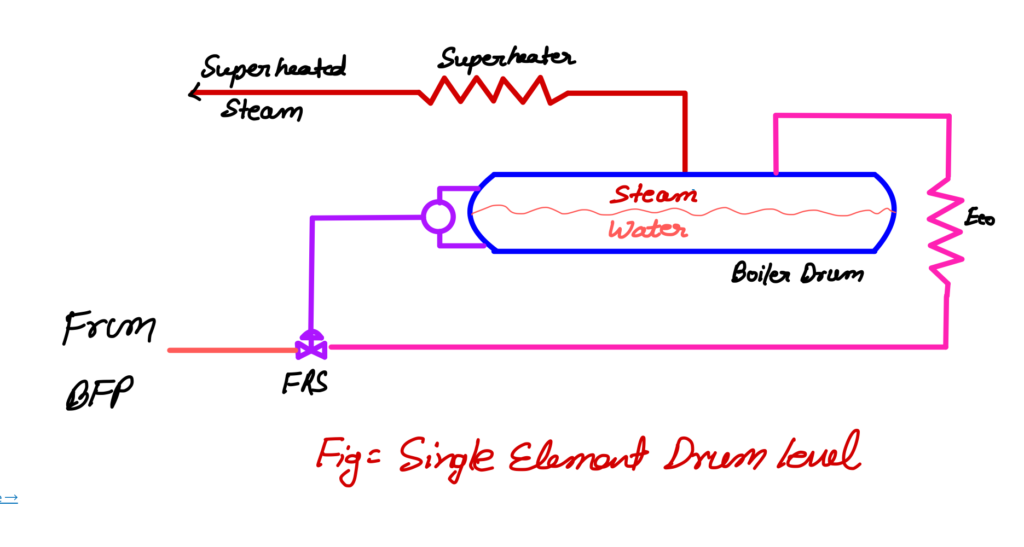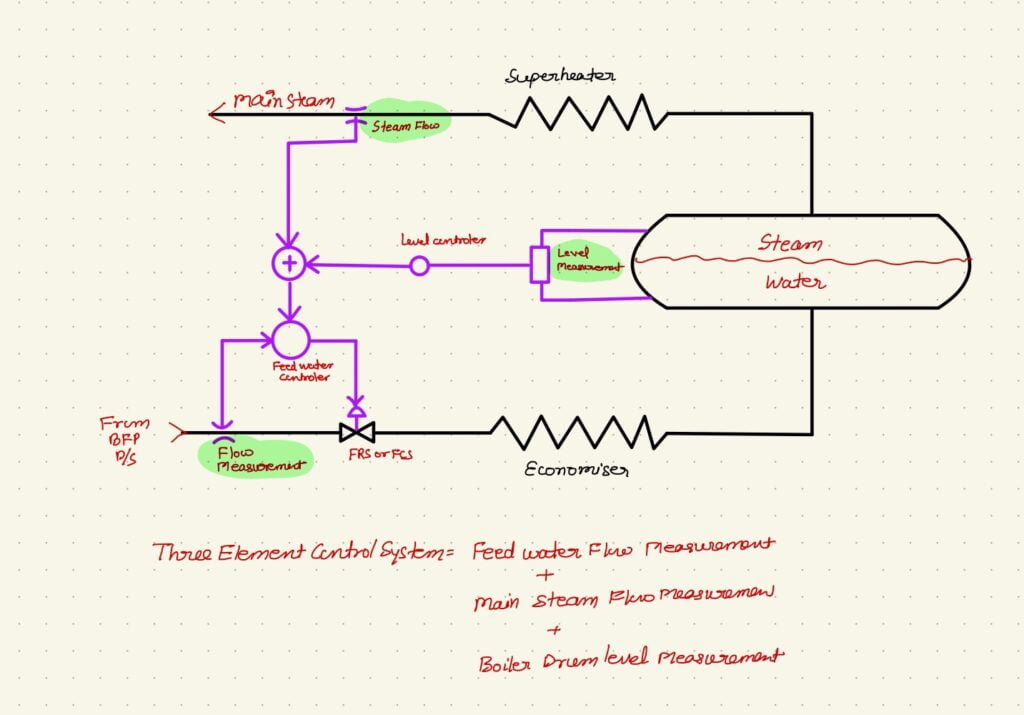Boiler Drum Level Control in Subcritical Boilers: Ensuring Safe and Efficient Operation
In subcritical boilers, the drum level control plays a crucial role in maintaining the desired water level inside the boiler drum. Here are the key aspects of boiler drum level control in subcritical boilers:
1. Level Measurement:
- Differential pressure (D/P) transmitter is commonly used to measure the drum level.
- The high-pressure side of the transmitter is connected to the steam space of the drum, while the low-pressure side is connected to the water space.
- The differential pressure between these two sides represents the drum level.
- A condensing reservoir is used to cancel out the boiler drum pressure and ensure accurate level measurement.
2. Control Strategies:
a. Single Element Control:
- This strategy utilizes only the drum level as the process variable.
- The level signal is compared to the desired set point, and the feedwater flow rate is adjusted accordingly.
- Typically suitable for small subcritical boilers with steady loads and relatively large water volumes.

b. Two Element Control:
- In addition to the drum level measurement, a steam flow transmitter is used as a feedforward input.
- The steam flow signal is characterized for gain and applied to modify the level controller output.
- This allows the control system to anticipate the need for additional feedwater flow before a decrease in drum level occurs.
- Commonly applied in subcritical boilers with moderate changes in steam demand.
c. Three Element Control:
- The three element control strategy incorporates the drum level measurement, steam flow measurement, and feedwater flow control.
- Two proportional plus integral (P+I) controllers are utilized in a cascade configuration.
- The level controller output is linked to the remote set point of the feedwater flow controller.
- This configuration provides faster reactions to load changes by the feedwater controller and stable control by the level controller.
- Effective in compensating for variations in feedwater pressure and commonly employed in subcritical boilers with shared feedwater systems.

It’s important to note that the specific control strategy implemented in a subcritical boiler may depend on factors such as boiler size, load dynamics, and operational requirements. The control system is designed to maintain the drum level within the desired range to ensure safe and efficient boiler operation.
Related Posts
BOE NUMERICAL QUESTIONS
QUESTION:- In an APH, Gas inlet flow is 31kg/s with 3.5% oxygen in the outletRead More
Analysis of the statement on mill outlet temperature:
Points in favor of higher mill outlet temperature (up to 100 – VM): Risks andRead More
How Flue Gas Exit Temperature Impacts Coal Mill Performance
The efficiency of a coal-fired power plant hinges on optimal heat transfer throughout the system.Read More
Comments are Closed